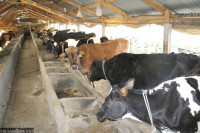Money
Power cuts slash production by half in Morang-Sunsari industrial corridor
Industrialists say unannounced outages have disrupted operations in over 350 factories and driven up costs and job fears.
Parbat Portel
Production in Biratnagar—eastern Nepal’s industrial capital—has plunged by half as persistent power cuts cripple factory operations across the Morang–Sunsari Industrial Corridor.
Over the past two months, erratic and unannounced load-shedding has severely disrupted the region’s industrial output. Business leaders say more than 350 small and large factories have been directly affected, forcing many to scale down or suspend production altogether.
“There isn’t even a fixed schedule for the load-shedding,” said Krishna Regmi, the Morang Chamber of Industry and Commerce office chief. “Electricity is being cut arbitrarily, and frequent tripping is damaging machines and raw materials.”
Anupam Rathi, president of the chamber, said the unreliable power supply prevents industries from operating at full capacity. “Our production costs are already higher than in other countries,” Rathi said. “A stable power supply is our most urgent need.” He added that power outages have driven up production costs by nearly 30 percent.
Many factories have resorted to diesel generators to stay operational, further inflating expenses by thousands of rupees per hour. As costs rise and output shrinks, the pressure on workers mounts. Textile, fruit-processing, and plastic factories have begun offering workers leave every other day to cope with the slowdown, and many are now anxious about their job security.
Chamber data shows that over 1,800 permanent and contract workers have already been affected.
The crisis has also spilled into Nepal’s export economy.
Production delays have forced businesses to cancel orders worth more than Rs420 million from India and Bangladesh, according to industrialists.
“Load-shedding has disrupted the entire industrial ecosystem—from production and distribution to employment,” said Pawan Kumar Sharda, president of the Confederation of Nepalese Industries.
Just as the government promotes the idea of ‘re-industrialisation,’ the power crisis has left many factory owners questioning their future. “We’re throwing away 1.2 tonnes of raw material daily,” said industrialist Naveen Rijal. “For small and medium enterprises, this is a devastating loss.”
Rakesh Surana, president of the Chamber of Industries, Morang, echoed those concerns. “It’s becoming impossible to run a factory with such an irregular supply of electricity,” he said. “If the situation doesn’t improve soon, we’ll be left with no option but to protest in the streets.”
Industrialists and workers are now trapped in what many describe as a vicious cycle of power cuts and economic instability. Observers say urgent coordination between the government, the Nepal Electricity Authority, and the private sector is needed to restore reliable energy access. Without it, they warn, Biratnagar’s identity as Nepal’s industrial hub may soon be in jeopardy.
The power crisis comes when Nepal’s broader industrial performance shows signs of strain.
According to the Nepal Rastra Bank’s Economic Activities 2023–24 report, the country's average industrial capacity utilisation has declined post Covid. The last two fiscal years—2022–23 and 2023–24—have seen sharper drops compared to earlier periods.
In the most recent fiscal year, 2023–24, the average capacity utilisation among surveyed industrial firms fell to 48.3 percent, down from 49.8 percent in 2022–23.
Pashmina producers performed best in all sectors, operating at 97.9 percent capacity. At the opposite end of the spectrum were vanaspati ghee manufacturers, who operated at just 0.9 percent.
The report also highlighted broader structural challenges. Domestically produced goods are increasingly unable to compete in the market, largely due to the influx of illegally imported items through Nepal’s open border. This has created severe distribution bottlenecks for local manufacturers.
The report recommends several urgent interventions to address these challenges.
Ensure a consistent and reliable electricity supply to sustain industrial operations. It also stresses the need to build essential infrastructure for goods produced within Nepal, such as collection centres and cold storage facilities.
Lastly, the report calls for a national strategy to retain labour. As large segments of Nepal’s workforce continue to migrate abroad for employment, domestic industries face a shortage of both skilled and unskilled workers.




 6.12°C Kathmandu
6.12°C Kathmandu















